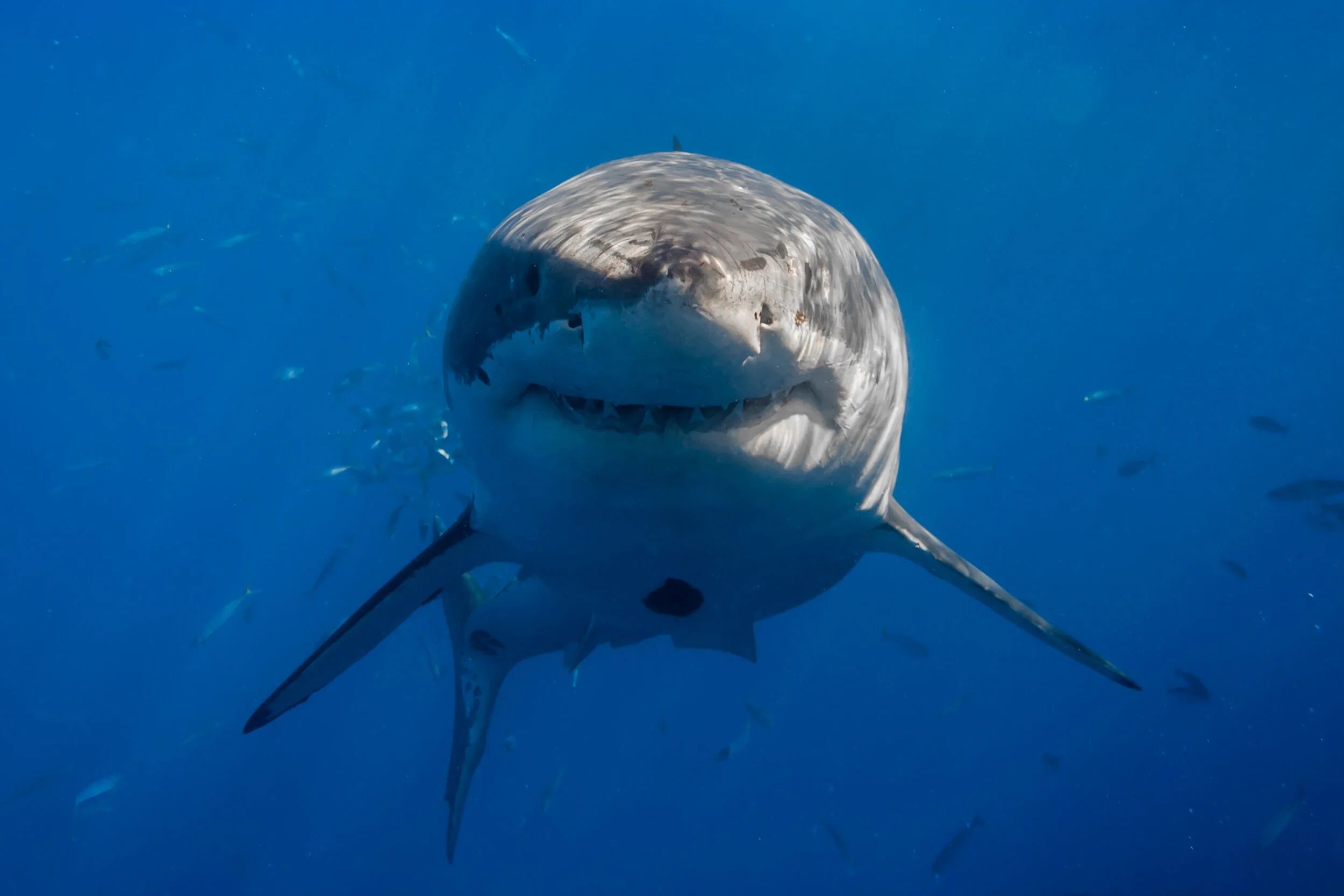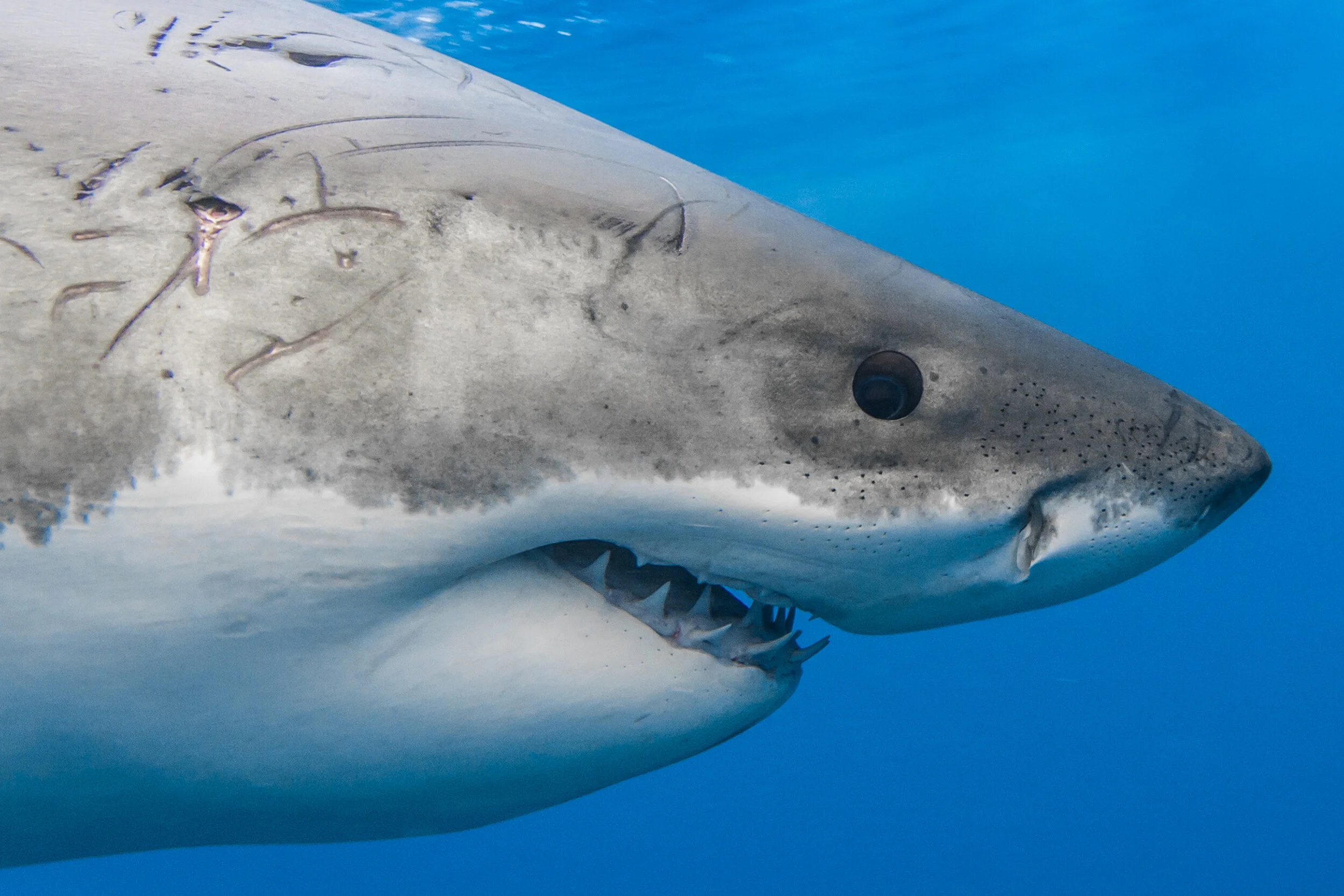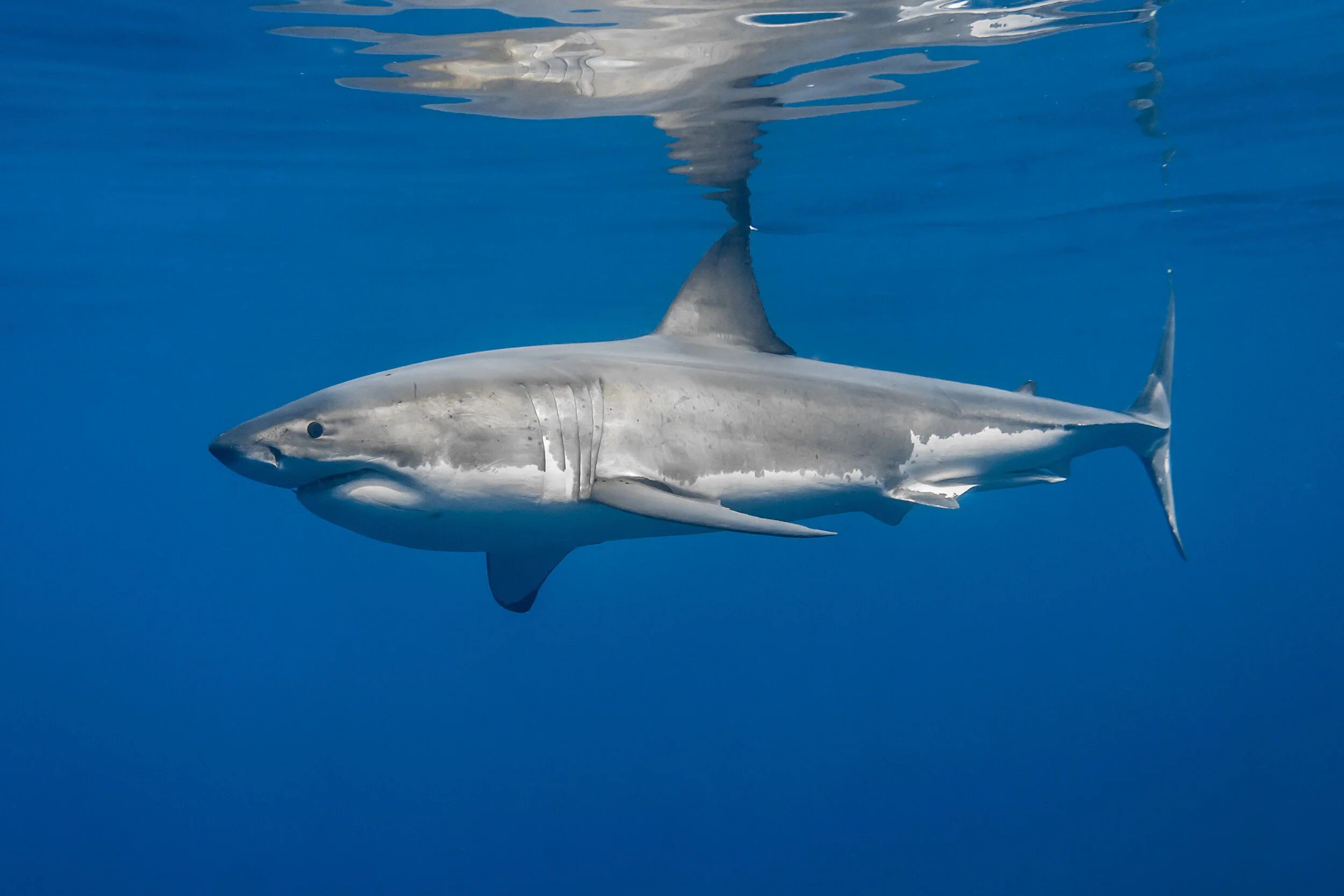Meet Shark Photographer Extraordinaire - George T. Probst
We got to sit down and chat with George T. Probst, an incredible white shark photographer. We talked about sharks, diving, photography, and everything in between! Below you’ll find the interview. Please note that ALL images are copyright of George Probst. Below the interview you’ll find all of his social media info and website. Cheers!
Save The Sharks: What do you do?
George Probst: I am hobbyist underwater photographer, who is probably most known for my photos of Guadalupe's white sharks. I use my photography and diving experiences with these sharks to try to help educate people about sharks and dispel some of the negative stereotypes associated with them, through social media and speaking engagements.
STS: How long have you been doing it?
GP: I first started diving with and photographing white sharks in 2006. I started doing shark presentations at elementary schools in 2014 and have since expanded to businesses, fundraisers, and commercial events.
STS: What got you into sharks?
GP: I have always been fascinated by sharks. My first memory of going to the library involves looking at books about sharks and dinosaurs. As a child, my family had a subscription to National Geographic, I was always drawn to the issues with sharks. I kept the August 1981 issue for years, which had a feature on sharks by Dr. Eugenie Clark with photos by David Doubilet.
STS: What got you into photography?
GP: I have dabbled in photography ever since I was a child, including briefly doing some darkroom work at my high school newspaper (though I only worked on processing film and images, not actually shooting the photos). When I first went to Guadalupe, I had a very simple point and shoot camera with a cheap underwater housing. I had also bought my first DSLR that year and used it for some surface shots, but I admittedly didn't know what I was doing (and there are times now, that I still feel like that's the case). After seeing some of the photographs that others had taken at Guadalupe, I knew I wanted to learn more about photography, in hopes that I could someday take shots like those.
STS: How many types of sharks have you seen in the wild?
GP: While diving, I've only seen five different species of sharks (white, whale, sand tiger, bull, and nurse). I would love to one day get the chance to dive with more species, but I have a very limited dive budget, and I tend to put most of it toward getting to Guadalupe as much as I can.
STS: Is there a specific white shark you have more of an interest in?
GP: I definitely have a few favorite individual white sharks at Guadalupe. Marine Conservation Science Institute has been working on a photo identification database at Guadalupe to catalog each unique individual documented at the island, and the sharks are given names through the project. My favorite individual is Cal Ripfin (aka Shredder), whom I saw on every one of my trips to Guadalupe through 2011. Unfortunately, Cal/Shredder has not been spotted since late 2011. He was easily the most camera-friendly shark of any species that I've been in the water with. He was usually very inquisitive and would often swim right up to cameras, which made him a wonderful subject to photograph. I hope he's still out roaming the ocean somewhere and that perhaps I will encounter him again one day.
STS: What's been your favorite dive?
GP: Guadalupe is my favorite dive site from a shark perspective, but regulations limit us to cage diving there. My favorite open water shark dives would probably be the sand tiger shark dives off the North Carolina coast. If you hit the right wreck, you can sometimes have over 50 sharks on a dive.
STS: What have you learned from your first dive up to now?
GP: Well, my first dive was on a hookah line in a surface cage at Guadalupe with zero dive training, so I've learned quite a bit since then. After my first trip to Guadalupe, I knew I wanted to experience the ocean more, so I got my OW certification not long after that trip. I have also done my enriched air (nitrox) certification since. Diving is one of those things that you never really stop learning from, and the more you dive the better you get at it. Getting my own gear and getting comfortable with it has made a big difference, compared to those first few years of diving, but I could always stand to learn more.
STS: What do you hope to gain from your photography work?
GP: When I first went to Guadalupe, my only goal for my photography was to capture some memories to share with friends and family, but with the advent of blogs and social media, I soon realized I could share my photography with a much larger audience, and I wanted to be able to reach people who might never have the opportunity to see a white shark (or any other shark species) in the wild, so that I could share with them imagery and information that they might not be exposed to by mainstream media coverage of sharks. One thing I noticed about white shark photography was that a lot of photographers tend to heavily focus on open jaw shots, which are almost always taken as a shark is going after bait. I realized early on that these types of shots weren't really all that representative of how white sharks spend most of their time, and I started to make an effort to capture images that I felt like were more all-encompassing of white shark behavior. If the goal is to try to get people to care more about sharks and be less fearful of them, I think they need to be able to see a more well-rounded representation of them other than just a mouth full of sharp teeth.
STS: What other outreach work do you do?
GP: I do a fair amount of shark presentations at schools, businesses, and some commercial events in which I use my photography and diving experiences to teach people about sharks and their importance in the ecosystem. Next to diving, these events are some of the most rewarding experiences I have in life. Traveling to schools is probably my favorite, as the students usually have some wonderful questions and will occasionally ask me about things that I would have never even thought of. I've learned a few new things about sharks from researching some of the questions that I've been asked by students, so not only do the students get to learn about sharks from me, sometimes, I get to learn new things, as well.
STS: Do you have a favorite shark? Why?
GP: White sharks have always been my favorite shark species. Something about their appearance has always captured my interest. As a child, I was both fascinated and terrified by them. In fact, it wasn't until my first dive trip to Guadalupe, that the terror aspect of them disappeared. While the average person probably thinks of white sharks as just swimming around trying to eat things all the time, they are so much more than that. There's a certain elegance and beauty that they possess when they are simply swimming by. I never tire of watching white sharks gracefully swim through the water as if it take them almost no effort at all. While the same can be said for other shark species, the white shark has always carried a certain majestic quality to me.
STS: If there's one thing you hope people gain from your photography, what would it be?
GP: It's my hope that people will gain a better understanding and appreciation of sharks from my photography. The people who are still stuck in the mindset that sharks are mindless killers from fictional movies are the people whom I'd like to reach most. I was one of those people before my first dive at Guadalupe, so I know perceptions can change.
STS: What message do you have for the general public?
GP: My message to the general public is that sharks are an important part of global ecosystem, and that they are much different than how people might have seen them portrayed on television and in movies. While they are indeed wild predatory animals who need to be treated with respect, they also need not be feared or indiscriminately hunted.
STS: What's your favorite post we've made?
GP: There was an Instagram post that you had about white shark embryo nutrition. I ended up finding a journal article on the subject after seeing that post. It was something I hadn't seen before!
STS: What do you think is the main issue sharks face today?
GP: In the most general sense, overfishing is my biggest concern when it comes to sharks. While shark finning seems to garner a lot of attention, I often feel like unsustainable catch rates of certain species (whether they be targeted or the result of bycatch) tend to get less attention. If certain species of sharks are being removed from the oceans at a rate faster than they can be replaced, we're going to lose those sharks. It doesn't matter to me if they're being targeted for their fins, their meat, or are killed as a result of bycatch.
George is an aspiring underwater white shark photographer, and he has a large following on social media. Follow him to stay up to date on his work!
his website is sharkpix.com
IG handle is @iphotographsharks
Twitter handle is @georgeprobst
Interact with us on social media!
Copyright www.savethesharksorg.com, all images copyright George Probst





